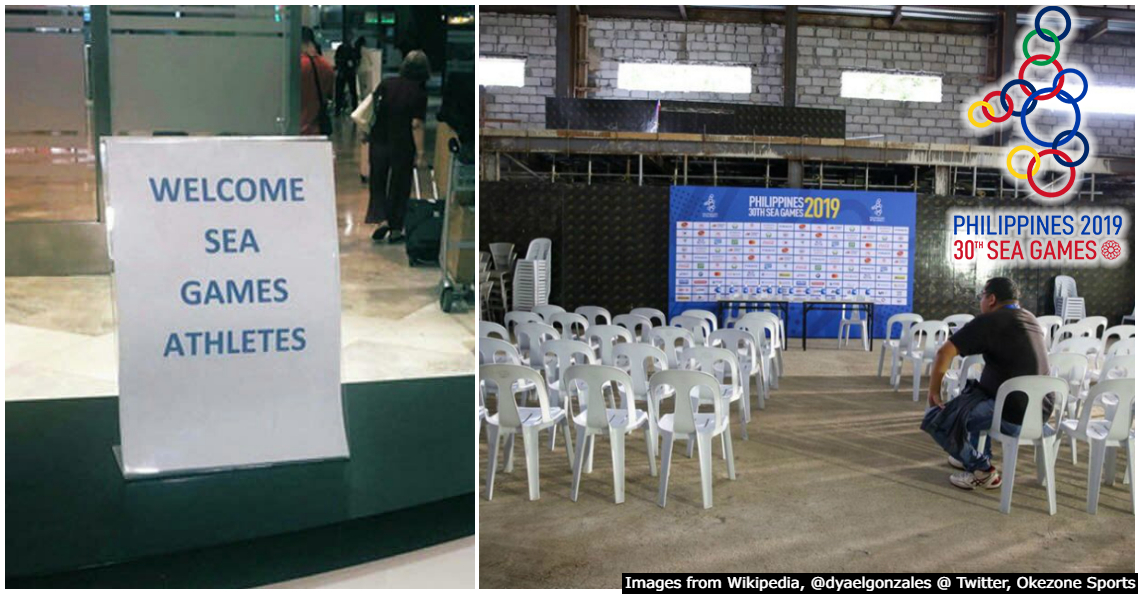4 Southeast Asian Graves That Make You Go WTF
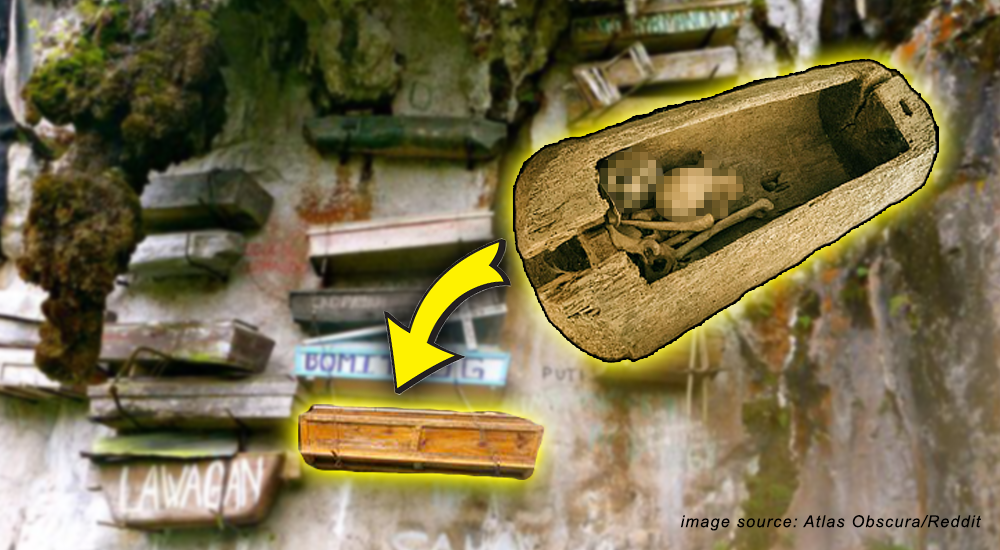
Imagine being dead and having people molest your tomb years after you’ve passed. That’s the story of Victor Noir, a french journalist whose burial place is known as the “sexiest tomb in the world”. After he was assassinated, his tomb became a main tourist attraction where people would kiss his mouth and touch his penis for fertility. He has actually been touched so many times that the metal around his genital and mouth area has corroded.
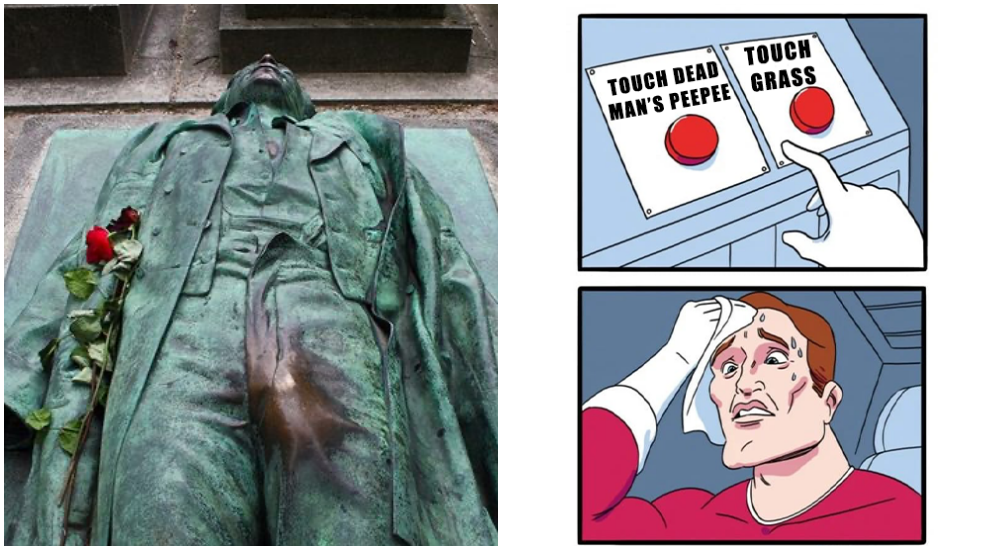
It seems like the guy can’t catch a break… even in death. And that got us curious. Are there any Southeast Asian graves that have become symbols for something far greater than the deceased themselves? And how are the deceased being treated by those who are still alive?
After finding the Jerunai, which is a Melanau burial pole that involved human sacrifice, we thought, “Sure got some more weird traditions!” So, we looked into some of the most abnormal Southeast Asian graves and we found some pretty macabre (and even romantic) burial traditions.
1. Dead babies in trees – Indonesia
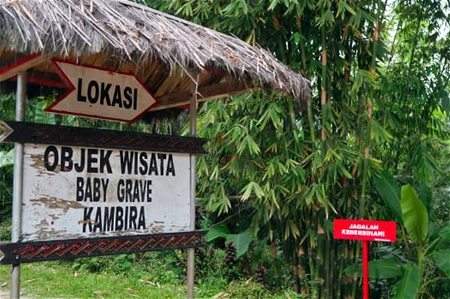
Watching your loved ones being put into the ground is hard enough, but burying dead babies is almost unimaginable. It’s hard for most people to picture a life ending so quickly. Because of that, the people in Tana Toraja, Indonesia used to practice a burial ritual called Passiliran. This is when they place dead infants, specifically those without teeth yet, into trees as a way to return them to their mother’s womb. But how like that?
Well, years ago, those who followed the Aluk Todolo faith (which is a belief in ‘The Way of The Ancestors’) would carve holes into large tree trunks, specifically the Tarra tree, in order to lay babies to rest. The reason why they chose this tree is because its known to have a wide diameter of 80-120 cm, which is much larger than average trees that only measure up to 38-48cm. Basically, think of these trees as a cemetery for babies. And since the Tarra trees also release a lot of white sap, that’s where the womb analogy comes in.

The Aluk Todolo believe that these babies should depart the world the same way they were born into it – naked and embraced in their mother’s love. So, the white sap of the Tarra tree is seen as a substitute for their mother’s breast milk. And these babies are often buried without any cloth wrapping their bodies or a coffin. But since these babies are put into trees, how can the family know which hole houses their baby?
Actually, the Aluk Todolo have a system in place. Babies are not simply put into random holes, but the hole they’re placed in actually has a lot to do with their family background. For example, the higher the baby is on the tree, the higher the social status of their family. The baby will also be placed in a hole that faces the family’s house. This makes it easier for the grieving families to visit their child… Well, that is after a full year has passed.
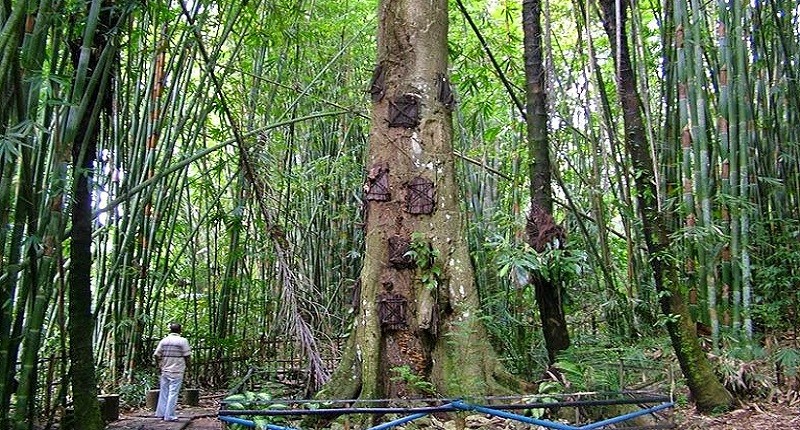
You see, the reason why the Aluk Todolo practice this ritual is to protect future babies from any health conditions or premature death. And to ensure that, grieving mothers are not allowed to visit the grave of their child for at least a year. This is so any baby that is born after the deceased’s death will have a lesser chance of getting the same fate.
While the Passiliran ritual makes some interesting points, its no longer practiced today. Due to the emergence of religion, the last burial was actually done in the 1970s. Despite that, other countries share the same belief, but perform it in different ways. And that brings us to our next Southeast Asian cemetery…
2. Coffins hanging off cliffs – Philippines
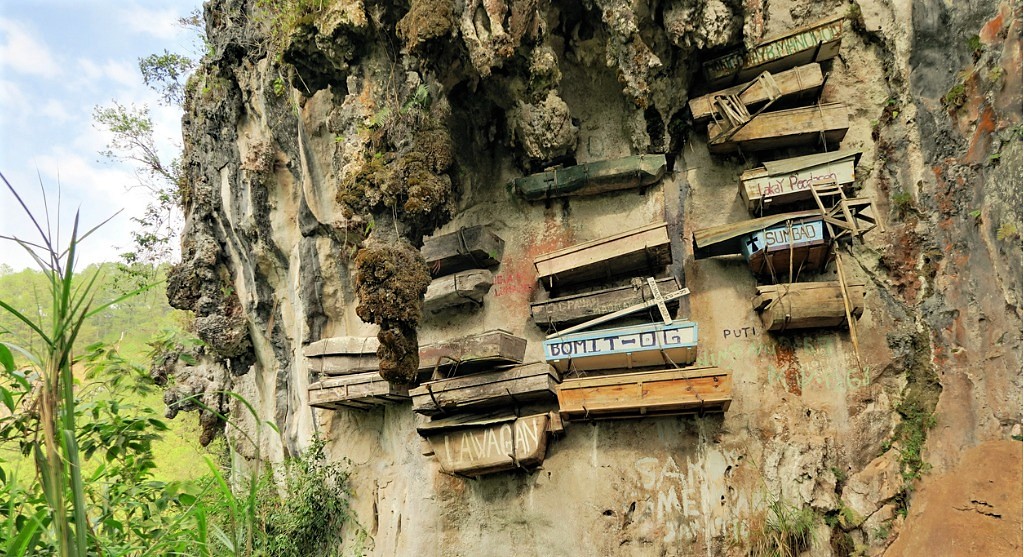
There seems to be an obsession with burying the dead at high places in Southeast Asia cos the Igorot people in Northern Philippines would hang coffins on the face of cliffs! But before we get into the business of hanging coffins, let’s take a look at what happens before that.
In Sagada, Philippines, the Igorot, specifically the Kankanaey, believe in this thing called Deeng, which basically refers to the juice of a rotting corpse. They believe that Deeng can transfer luck, blessings and talent to the living who come in close contact with it. So, whenever someone dies, the Kankanaey would practice Sangadil, which basically involves tying the body to a death chair before tossing them from one person to another like a ball in a basketball game.
During that time, the pus and blood would drip from the dead and onto the living. Many family members would also carry the corpse to the cliff in hopes that they can touch the Deeng. But they don’t let the corpse secrete juice for that long though. Right before the burial, they would smoke the corpse to prevent fast decomposition and to conceal the rotting smell.
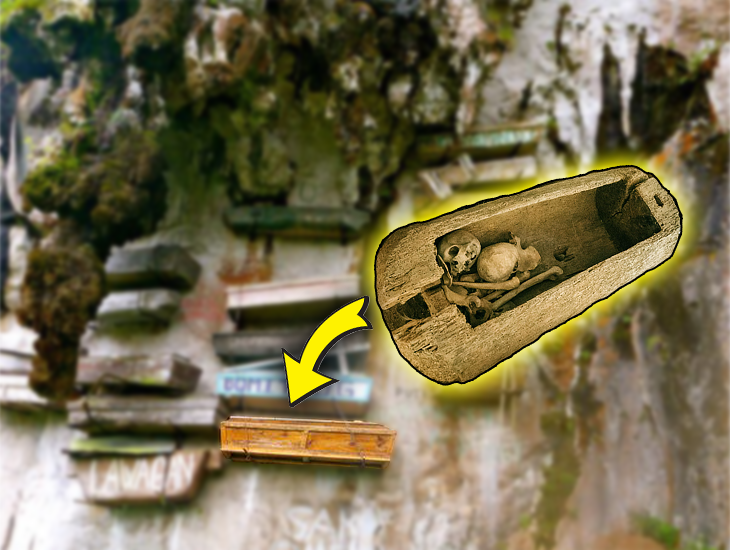
Actually, the Igorot tribe and the Aluk Todolo have similarities in their burial rituals cos they both believe that humans should depart the world the same way they were born. Since these coffins had to be hung on cliffs, they’re often very small to accommodate for space. So, the corpses would be placed in a foetal position or they would actually break the bones of the deceased so they would fit.
Also, the position of the deceased on the cliff is not random either. Similar to Passiliran, their position is determined by their status, which is dictated by several factors:
- Whether or not they have pure Igorot blood
- If they had grandchildren
- The way they died – preferably natural causes.
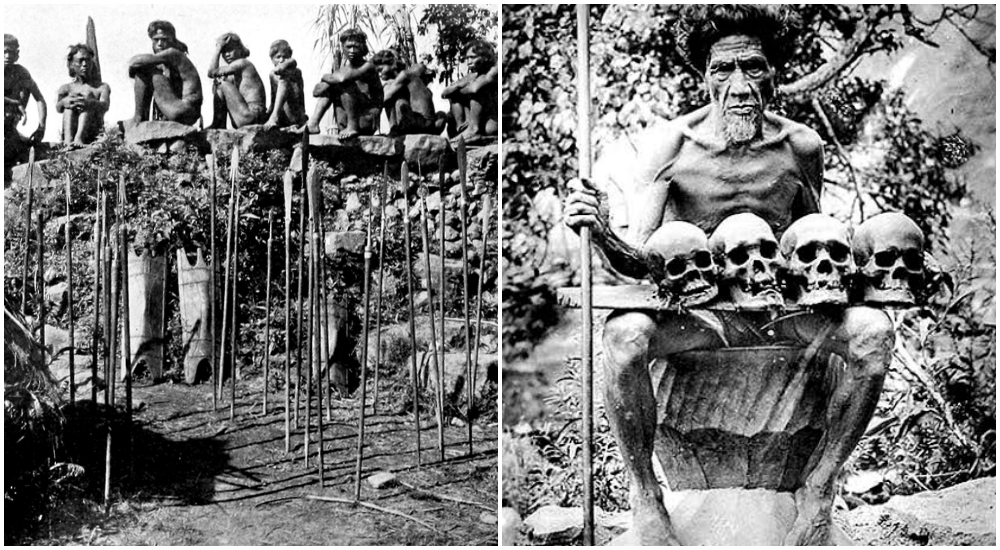
This is important cos the Igorot tribe believe that the higher the dead are placed, the greater the chance of their spirits reaching the higher plane in the afterlife. And with that, it answers why they don’t bury these bodies in the ground. But that’s also because back then, head hunters would dig up the heads of rival tribes to bring them home as trophies.
This burial ritual was done for over 2,000 years, but it slowly died due to the popularisation of Catholicism. So, now you might be wondering, what about modern day cemeteries? Takkan all the interesting ones happened in the past? Well, nowadays we have more romantic tributes for the dead…
3. Poetry cemetery – Vietnam

In this modern age, declarations of love are often seen on social media when someone passes away. But how often do you see these poems and songs being etched onto tombs? One cemetery in the Duong Minh Chau district of Tay Ninh, Vietnam is known as the most romantic burial ground in the country. That’s because it’s the home of hundreds of tombs that are covered in poems.
According to Pham Van Loc, a grave manager who has been there since 1963, some of these poems date all the way back to the early 20th century. But how did this romantic ritual come to be?
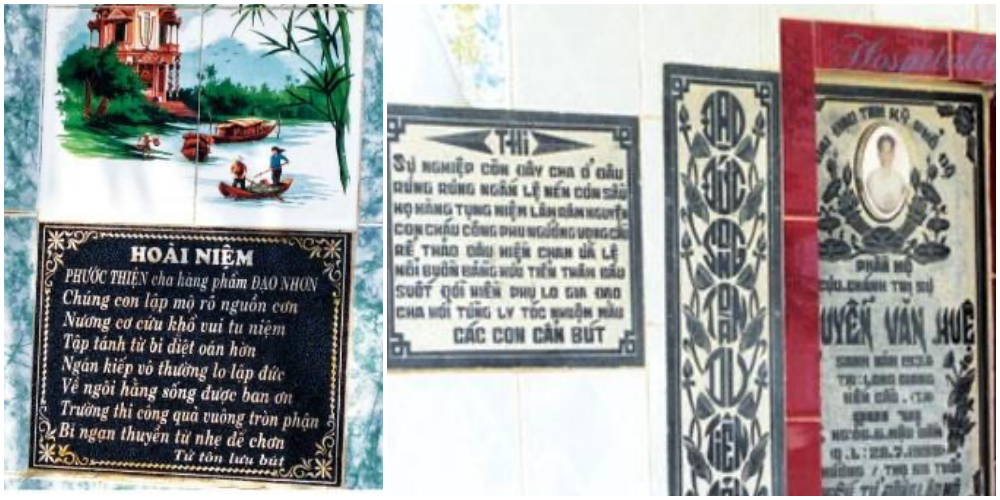
Well, according to Vietnamese news sources, there are two main origin stories for these poems. The first, which is the lesser known theory, has something to do with love and betrayal. The story goes that a man suspected his wife was cheating on him and because of that, he took his own life. The wife, devastated by his passing, crafted two folk songs and etched them onto his tomb.
The other story is less heartbreaking and is the most accepted theory amongst the Vietnamese. In this retelling, there was a man who was known for being a great poet. When his wife passed away, he coped with his grief by crying near her grave and reading poems to her everyday. Eventually, this man started painting these poems on her tomb. The man’s devotion moved many other grave goers and from there, people started adopting his romantic gesture by writing poems of their own.
Now, there are even tombs that hold up to 7-8 poems. And while these tombs sometimes hold the lyrics to songs, you can’t actually hear them being sung. For that, you’d have to go to Malaysia…
4. The grave that sings – Malaysia
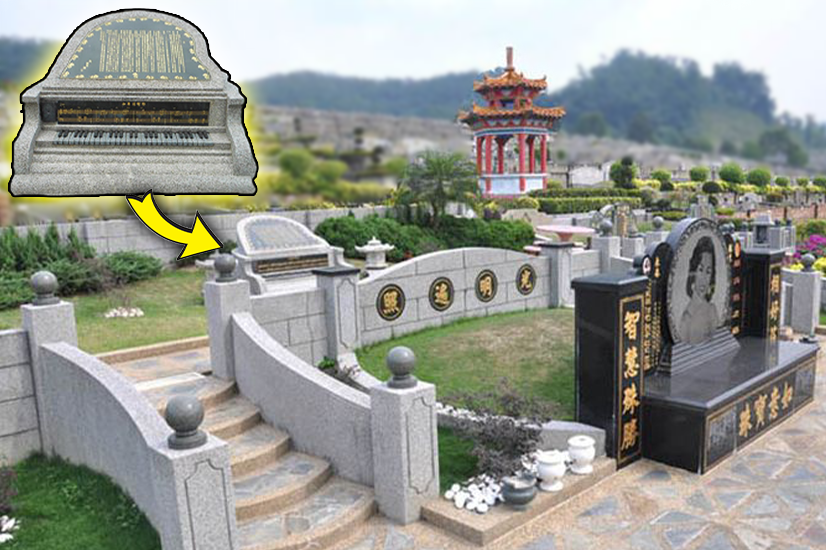
Have you heard of the famous Chinese singer, Bai Guang? If you haven’t, then you’d probably know her through some of her popular songs like ‘Waiting For You’ and ‘Without You’. Born in Hebei, China, she became the country’s biggest singer and movie star during the 1940s. Her work was so popular, even Malaysians used to listen to her songs in kopitiams. However, despite being an ocean away, this songstress chose Malaysia to be her final resting place. She’s currently buried in the Nirvana Memorial Park in Semenyih. But why did this international superstar want to be buried here?
Well, after years of love affairs, Bai Guang married a Malaysian man and chose to buried here with him. In 1999, she succumbed to her battle with colon cancer and her tomb was embellished with a stone piano, stone chairs and a musical console.
Now, fans from across the world would press a button on the musical console to hear her raspy voice again. If you ever visit her grave, several of her popular songs will play, but most notably ‘Kuang Lian’ which means ‘madly in love’. It serves as a reminder for how she touched the lives of those close to her and those who felt near through her music.
We do things differently, but we all want the same thing
The ways in which we bury our loved ones inform how each culture feels about mortality. Be it a way of honouring tradition or just a way to honour those who have passed, no ritual is more important than the other. Not every tomb has to become a symbol for something bigger. Sometimes, its just a relic of our culture or evidence that a person has once lived and been loved.
Regardless, these Southeast Asian graves show that no matter how different our cultures may seem, the one thing that ties us together is our unwavering respect for the people around us – dead or alive.



